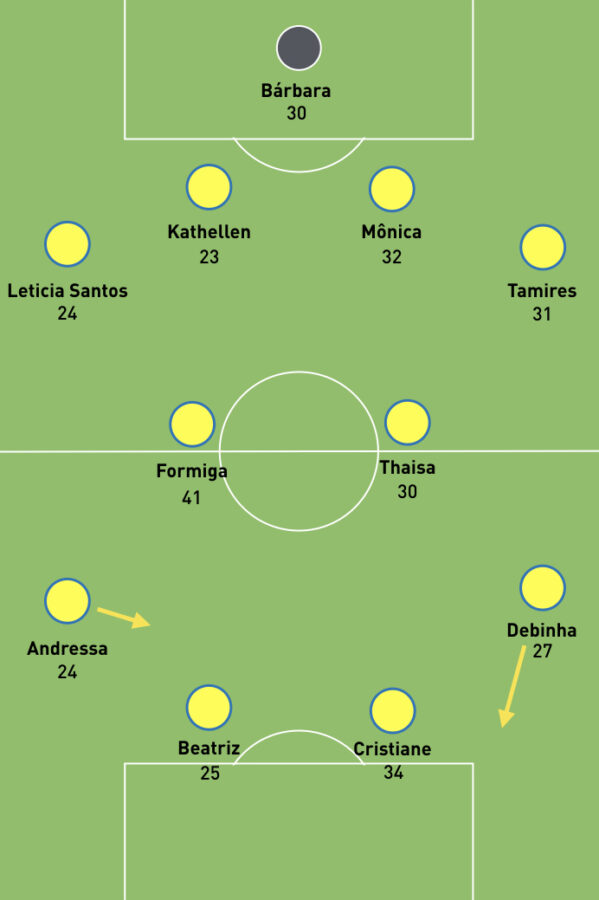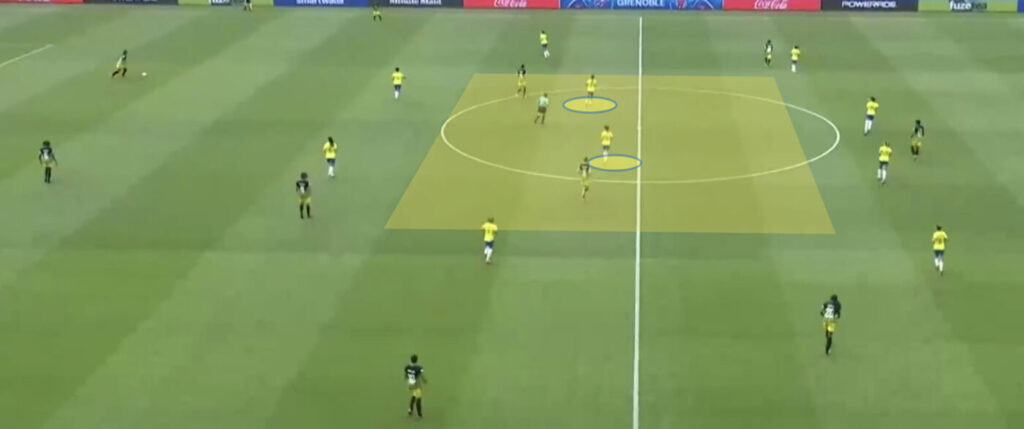
Brazil’s comfortable 3-0 opening win over Jamaica was impressive, highlighting everything good about their potent team. But those with longer memories will remember the Seleçāo’s terrible form in the lead up to the tournament, and those with eagle eyes would have recognised the same underlying weaknesses against Jamaica which contributed to those nine consecutive losses prior to the World Cup.
The Women’s World Cup all-time top goal-scorer Marta was injured for the opener, sitting on the bench as moral support only. She will threaten Beatriz’s position from the start or off the bench if fit against Australia. After Cristiane’s hat-trick against Jamaica, Marta is the only player in France with more World Cup goals than her strike partner of more than a decade, underlining Brazil’s collective pedigree.
The flipside of that pedigree is that Brazil’s team is on the older side, especially if Marta (33) joins those pictured. At what point does valuable experience become tired legs? And when does continuity become a lack of fresh talent pushing the incumbents out? Those are the questions facing Brazil this tournament, which has the feel of their last chance to mix it with the global powerhouses before a big rebuild. The Matildas will pose those questions more sternly than the Reggae Girlz did.
ATTACKING
Vadão lines his team up in a somewhat old school 4-2-4. This shape is out of vogue in the modern game because while it makes the pitch big, it is quite rigid and static. Brazil rely on individual attackers winning their duels to advance the ball, rather than rotations and positional play which create free players.
We’ll see in these build up examples that Brazil’s defenders have little option but to play long, straight passes into their front four. While these attackers are technically excellent, such direct passes can be picked off by defenders marking tightly or stepping in front to intercept. In the final clip, we see the consequences when the defender hesitates and allows her opponent to turn.
Andressa’s left foot, Debinha’s runs
Outside of individual moments, Brazil has one key attacking pattern the Matildas will have to prepare for. From the left, Debinha makes forward ‘outside-in’ runs towards goal, becoming like a third striker. From the right, the left-footed Andressa prefers to cut in between the lines in a slightly deeper mode. In combination, these movements allow Andressa to open herself up to bend killer passes in behind the defence for three targets homing in on goal.
DEFENDING
Midfield underload
The spatial weakness in a 4-2-4 is central midfield, and so it goes that a number of Brazil’s goals conceded this year can be traced back to being outnumbered in that area. Formiga still looked like a force of perpetual energy against Jamaica but at 41, and in her seventh World Cup, may find the going harder as the tournament matures.
Jamaica did not seek to play through this area, instead playing long balls to their star striker. We can see in the image the zone where the Matildas might look to get a 3v2 overload.

In these remarkably similar examples, from England’s defeat of Brazil earlier this year and Australia’s last major meeting with Brazil at Rio 2016, we see how this concept plays out in live action. Note how one of Brazil’s midfielders gets stranded between two opponents.
Recent struggles in transition
Putting all these pieces together, we see that Brazil have some tactical similarities to Italy, as we identified in our last preview. They commit lots of numbers to attack, leave space through midfield defensively and are a team with a yard less pace than they used to have. It’s not surprising, then, to see that many of their goals this year have come from quick counter-attacks starting in their attacking half.







